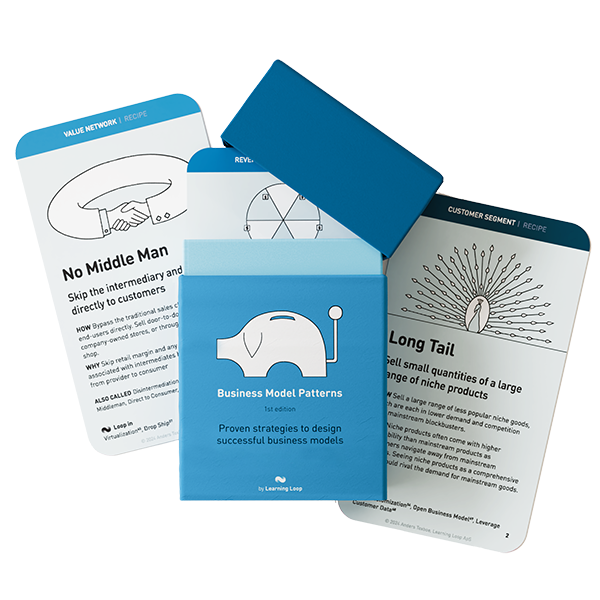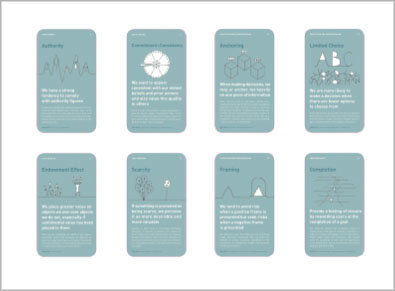Design a profitable business with the Business Model Patterns card deck
Explore and refine your business strategy with proven models used by successful companies.
Get your deck!A recent field experiment that followed 261 UK startups for nine months delivered a surprise: the familiar “build–measure–learn” cycle raised revenue only after the underlying business model was largely fixed. In the fuzzy zero-to-one stage, the same data-driven routines slowed growth.
Startups exist to search; scale-ups exist to refine.
Since 2011, The Lean Startup has urged founders to treat every move as a testable hypothesis. Its language—MVPs, A/B tests, evidence-based pivots—now shapes accelerators, enterprise product teams, and government programs. Yet the new data suggest that timing matters: experimentation appears to pay off only once core design choices are stable.
The study tracked revenue for just nine months. Short-term dips can actually mark healthy pivots: one founder interviewed shut down a modestly profitable feature to pursue a bigger market, accepting a revenue hit in exchange for a clearer vision. The paper itself records founders describing the period as positive, believing the learning would fuel long-term growth. For investors and advisors, the message is clear: judge early experiments by insight gained per month of runway, not by immediate cash-flow charts.
The missing step: craft a Theory of Value
A Theory of Value answers a single question: Why will this venture create and capture value better than anyone else? It turns hunches into a falsifiable narrative and gives early experiments a clear target.
Discovery asks should we build it? Optimisation asks how well does it run? A Theory of Value bridges the two.
To develop one, founders should:
- Map the pains and gains of a narrowly defined audience—deep interviews expose unmet outcomes and workarounds.
- Draft a value promise that ties the biggest pain to a concrete benefit, expressed in the customer’s words—not yours.
- Sketch the money loop: price point, frequency, cost to serve, and competitive moats.
- List the critical unknowns—assumptions that would destroy the model if false.
Capture the narrative on a single page—canvas, doc, or slide - then design experiments only for those critical unknowns. Our Business-Model Discovery playbook and Problem-Solution Fit Map walk through the steps.
A clear Theory of Value becomes the yardstick for every test: if a proposed metric doesn’t reduce uncertainty about an existential assumption, save it for later.
From story to science
Early testing is about revealing value, not proving you were right. That distinction matters because the tools, sample sizes, and decision criteria differ.
Discovery first, optimisation later
Discovery relies on small-n evidence—interviews, observation, and smoke tests—to expose whether the problem is real and urgent. Optimisation kicks in once the problem–solution pair is stable and the task shifts to improving conversion, margin, or retention.
The table below shows how questions and tools evolve across phases.
| Phase | Dominant unknown | Primary goal | Best-fit approach | Learning Loop resources* |
|---|---|---|---|---|
| Explore | Is there real pain? | Craft a theory of value | Intuition, qualitative inquiry | Customer Interviews Find the Watering Hole |
| Converge | Will the model work? | Lock the business model | Judgment + targeted tests | Customer Discovery Program Concierge MVP |
| Optimise | How efficiently can we scale? | Improve unit economics | Full scientific method | A/B Test Price Experiment |
Notice how statistical tools appear only in Optimise; that’s where the HBR study saw revenue gains. For more depth, explore our full library of product playbooks.
Transition to the next phase when answers to the dominant unknown become repeatable across customers; that’s the signal to graduate to the next column.
Keep yourself from getting stuck
When you’re deep in the weeds, simple heuristics help decide whether to log another interview or fire up your analytics platform:
- Delay heavy analytics until your theory of value resonates in conversation. Early dashboards with tiny denominators create noise, not clarity.
- Write down assumptions first. A lightweight canvas or hypothesis backlog surfaces what truly needs testing.
- Pick metrics you can influence now. Qualitative signal—problem intensity, willingness to pre-pay—often beats fragile conversion rates.
- Treat experiments as options, not obligations. If a pivotal decision cannot wait, lean on judgment informed by small-n evidence; run the systematic test later.
Apply these rules, and the Lean Startup toolkit becomes a force multiplier rather than a distraction—guiding progress instead of creating analysis paralysis.
What this means for Lean Startup
The experiment does not invalidate the scientific method; it simply locates its highest payoff after key design choices are set. In that sense, Eric Ries popularised a framework that startups should adopt when they graduate into scale‑ups. Until then, structured intuition, direct user contact, and rapid sketches may deliver higher return on time.
Startups exist to search; scale‑ups exist to refine. Intuition and qualitative discovery steer the search. Once the outline of the business is visible and your theory of value holds up, rigorous tests can safely optimise it.
- Frese, M., et al. (2025, February). Research: When Does Scientific Decision‑Making Benefit Startups. Harvard Business Review.
- Ries, E. (2011). The Lean Startup: How Today's Entrepreneurs Use Continuous Innovation to Create Radically Successful Businesses. Crown Business.
- Lean Startup website by Ries, E.
- Bland, D., & Osterwalder, A. (2020). Testing Business Ideas: A Field Guide for Rapid Experimentation. Wiley.
- Osterwalder, A., Pigneur, Y., Bernarda, G., & Smith, A. (2014). Value Proposition Design: How to Create Products and Services Customers Want. Wiley.

